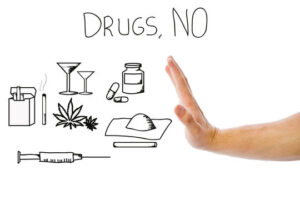Substance Use and Abuse on College Campuses: Understanding, Challenges, and Solutions
Introduction
A common image of college life is freedom, independence, and discovery. However, along with academic pursuits and social experiences, substance use and abuse represent significant challenges on college campuses worldwide. This article seeks to offer a thorough analysis of the frequency, underlying causes, repercussions, and viable remedies related to drug use and misuse among college students.
The Prevalence of Drug Use:
1.) Alcohol: On college campuses, alcohol is still the most widely used drug, and binge drinking is very widespread. Approximately 60% of college students between the ages of 18 and 22 reported consuming alcohol in the previous month, with nearly two-thirds of them engaging in excessive drinking, according to the National Institute on Alcohol Abuse and Alcoholism (NIAAA).
2.) Marijuana: The term “marijuana” describes the dried seeds, stems, flowers, and leaves of the Cannabis sativa or Cannabis indica plant. The plant has additional comparable chemicals as well as the psychoactive substance THC. Marijuana usage among college students has increased since it became legal in several states. 44% of college students reported using marijuana in the previous year, according to the Monitoring the Future research, which indicated that marijuana usage among students reached its highest level in over three decades in 2020.
3.)Prescription Drugs: College students frequently take prescription medications for non-medical purposes, especially stimulants like Adderall and Ritalin. Approximately 30% of college students reported taking prescription stimulants non-medically at least once in their career, according to a research published in the Journal of American College Health.
Contributing Factors:
1.)Peer Influence: Substance use patterns among college students are significantly influenced by peer pressure and social acceptance. For the purpose of blending in or interacting with their classmates, students could feel pressured to take drugs.
2.) Mental Health and Stress: High levels of stress, pressure to perform well academically, and mental health issues like depression and anxiety are frequently associated with college life. Substance abuse is a common coping strategy used by students to reduce stress or self-medicate underlying mental health conditions.
3.) Accessibility: On college campuses, alcohol, narcotics, and prescription prescriptions are easily accessible, which leads to their overuse. There are several chances for students to buy and use drugs, including fraternity and sorority parties, university activities, and off-campus venues.
4.) Cultural standards and Expectations: Cultural elements can affect students’ views and actions regarding drug use. These include societal standards around alcohol consumption and how substance use is portrayed in the media and popular culture.
Consequences:
1.)Academic Impairment: Substance abuse can negatively impact academic performance in a number of ways, such as worse grades, absenteeism, diminished cognitive function, and decreased focus. Students who abuse drugs or alcohol are more likely to struggle academically and may be subject to disciplinary measures or academic probation.
2.) Health Risks: College students who take drugs or drink excessively run serious health risks. Substance abusers frequently experience alcohol poisoning, overdose, addiction, and long-term health effects include liver damage, cardiovascular issues, and neurological impairments.
3.) Personal Safety Issues: On college campuses, drug usage raises a number of safety issues, such as violence, sexual assault, accidents, and injuries. People who are drunk are more likely to have accidents and take risks that put other people and themselves in danger.
4.) Legal Ramifications: Underage drinking, drug possession, and distribution entail legal ramifications that can have a long-lasting effect on students’ life. These consequences include criminal records, fines, and jail time.
Solutions and Countermeasures:
1.)Safeguarding Programs: College students’ substance use may be decreased and awareness raised by implementing evidence-based preventive programs that emphasize support from others, drug education, harm reduction, and responsible drinking. Workshops, instructional campaigns, peer-led projects, and internet resources are a few examples of these programs.
2.) Identification and Action: Students who are at risk of substance misuse can be identified and connected to relevant resources and treatment choices with the use of screening tools and intervention programs provided by college counseling centers, health clinics, and student support services. Treating drug use issues and preventing additional harm need early intervention.
3.) Rules and Implementation: In order to prevent substance misuse and foster a better campus atmosphere, it is recommended that strict regulations and laws regulating alcohol and drug usage be enforced on campus. These policies should include bans on underage alcohol consumption, public drunkenness, and possession of illegal drugs. Sending a strong message about the gravity of substance-related behaviors is accomplished by enforcing regulations consistently and providing obvious penalties for violators.
4.) Support Services: Providing complete support to students grappling with drug usage, such as guidance, addiction therapy, peer support communities, and connections to medical experts, may expedite recuperation and enhance general welfare. In order to meet the multifaceted needs of individuals impacted by drug misuse, it is imperative to provide a stigma-free atmosphere where students feel safe seeking treatment for substance-related difficulties.
Conclusion
Students’ safety, health, and academic performance are all negatively impacted by substance use and misuse on college campuses. Educational institutions can take proactive actions to address this widespread issue by knowing the prevalence, contributing causes, penalties, and viable solutions surrounding drug use among college students. By implementing a range of strategies such as screening and intervention services, policy enforcement, support efforts, and preventative programs, educational institutions may provide more secure and healthy learning environments that foster optimal student performance. Addressing drug use and promoting a culture of accountability, respect, and resilience on college campuses need cooperative activities including administrators, instructors, staff, students, and community partners.

































